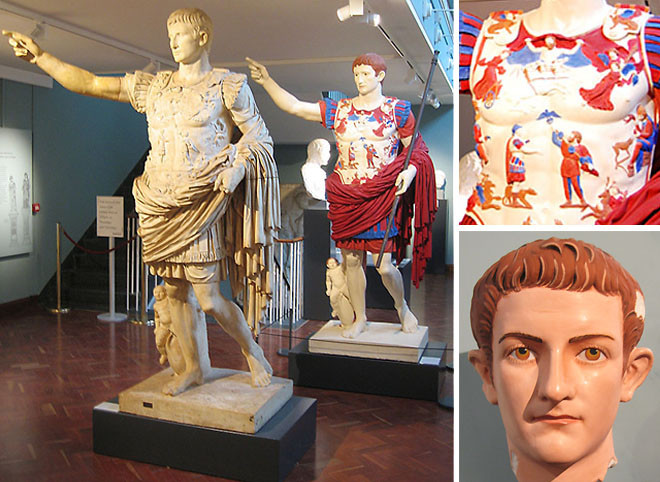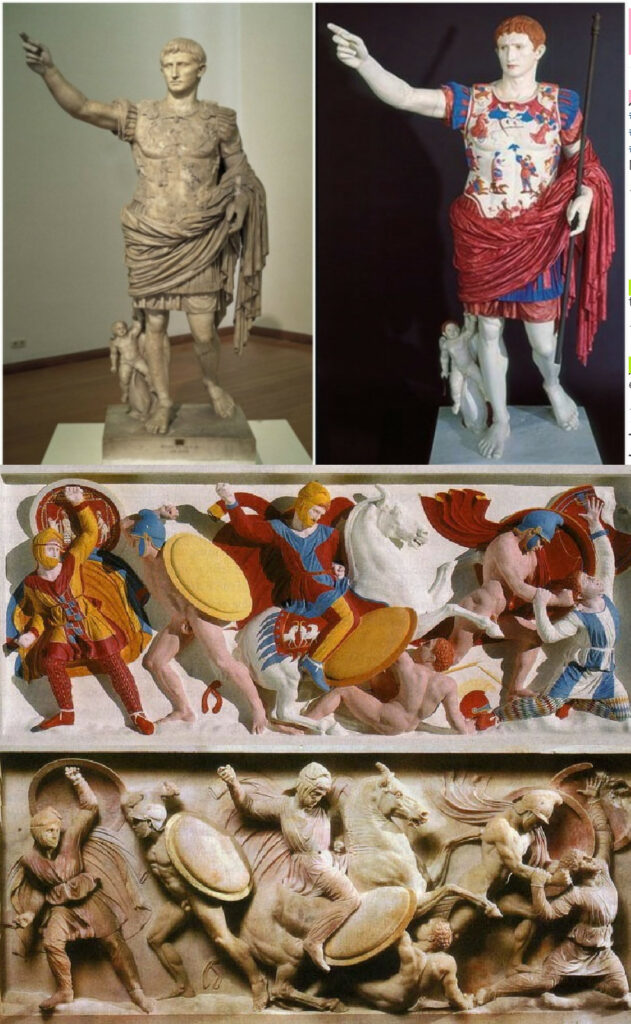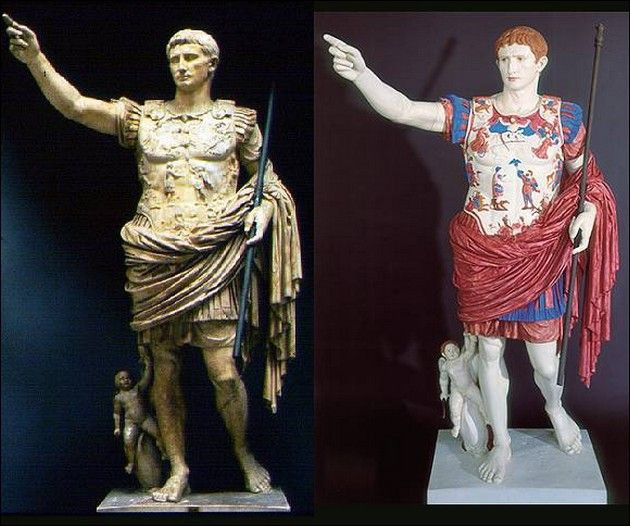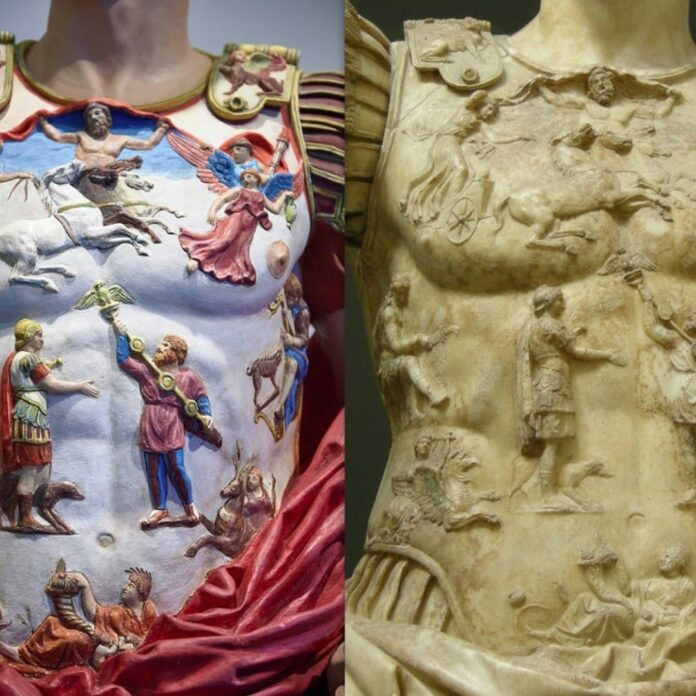For centuries, the weathered marble statues of Ancient Rome have captivated our imagination, their monochromatic appearance a stark contrast to the vibrant world they once inhabited. However, recent technological advancements have peeled back the layers of time, revealing a well-kept secret – these sculptures were once awash with a dazzling array of colors.
The rediscovery of polychrome (multi-colored) statuary in the Roman world has shed new light on the artistic sensibilities and creative genius of ancient sculptors. By uncovering the long-hidden hues that once adorned these iconic works, we gain a more complete understanding of the aesthetic and symbolic significance of Roman art.
In this blog post, we’ll delve into the fascinating story behind the hidden palette of antiquity, exploring the unique techniques used by Roman artisans, the groundbreaking discoveries that have unveiled these vibrant masterpieces, and the profound implications of this rediscovery for our understanding of the ancient world.
The Wax and Pigment Technique: Bringing Statues to Life

Roman artisans were true masters of their craft, employing a unique method to breathe life into their statues. They melted pigments in wax, creating a versatile medium that could be applied directly to the marble surface. This innovative technique not only imbued the sculptures with rich, lasting hues but also served as a protective layer against the ravages of time and the elements.
By using this wax-based pigment mixture, Roman sculptors were able to achieve a level of detail and vibrancy that would have been impossible with traditional painting methods. The resulting statues were true works of art, their surfaces shimmering with a diverse palette of colors that captivated the eyes of ancient viewers.
Uncovering Imperial Splendor: The Case of Augustus of Prima Porta
One of the most famous beneficiaries of this rediscovery is the statue of Augustus of Prima Porta, a stunning depiction of Rome’s first emperor. Long admired for its exceptional craftsmanship, this iconic work has now revealed its true colors, quite literally.
Through the use of advanced ultraviolet photography, researchers have been able to detect traces of pigment that were previously invisible to the naked eye. These groundbreaking discoveries have provided invaluable insights into the statue’s original appearance, offering a window into the aesthetic sensibilities of ancient Roman artists.
The Augustus of Prima Porta statue, once thought to be a monochromatic masterpiece, is now known to have been adorned with a rich tapestry of hues. The emperor’s robes, for example, were likely a vibrant red, while his sandals may have been accented with touches of gold. These vibrant details add new layers of depth and meaning to this already iconic work of art.
The Significance of Color in Roman Art

The revelation of polychrome statuary goes far beyond mere aesthetics. These colors carried deep symbolic meaning and emotional weight, adding layers of significance to already powerful works of art. By uncovering these long-hidden hues, we gain a more complete understanding of the artistic vision and creative genius of ancient Roman sculptors.
In the Roman world, color was not just a decorative element – it was a powerful tool used to convey complex ideas and evoke specific emotions. The choice of pigments, their placement, and their intensity all held profound significance, reflecting the cultural, religious, and political values of the time.
For example, the use of vibrant red pigments, often associated with power and authority, may have been used to emphasize the grandeur and status of important figures like the emperor. Similarly, the incorporation of gold accents could have been a way to imbue the statues with a sense of divine splendor and celestial connection.
By uncovering these hidden layers of meaning, we gain a deeper appreciation for the artistic vision and creative genius of ancient Roman sculptors. Their works were not merely static representations, but rather dynamic canvases that spoke volumes about the beliefs, aspirations, and cultural identity of the Roman Empire.
The Enduring Power of Rediscovery

As we continue to unravel the mysteries of the past, the rediscovery of color in Roman statuary stands as a testament to the enduring power of human creativity and the relentless pursuit of knowledge. It reminds us that there are always new wonders to be found in the annals of history, waiting for the right technology and the curious minds to bring them to light.
The revelation of these vibrant masterpieces has not only enriched our understanding of ancient art but has also sparked the imagination of scholars, artists, and the general public alike. It invites us to reconsider our preconceptions about the ancient world and to approach the study of history with a fresh, open-minded perspective.
Conclusion
The rediscovery of color in Roman statuary is a testament to the enduring power of human creativity and the relentless pursuit of knowledge. By peeling back the layers of time, we have uncovered a hidden palette that once adorned the iconic works of ancient sculptors, offering a glimpse into the aesthetic sensibilities and cultural values of the Roman Empire.
As we continue to explore the wonders of the past, the story of these vibrant masterpieces reminds us that there is always more to discover, and that the journey of rediscovery is one that promises to yield countless new insights and inspirations. So let us embrace the spirit of curiosity and uncover the hidden gems that still lie waiting, ready to illuminate the rich tapestry of our shared human history.
